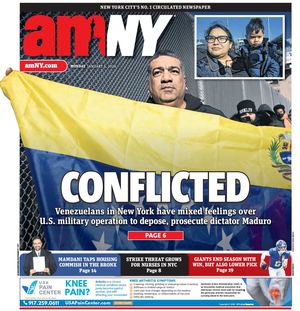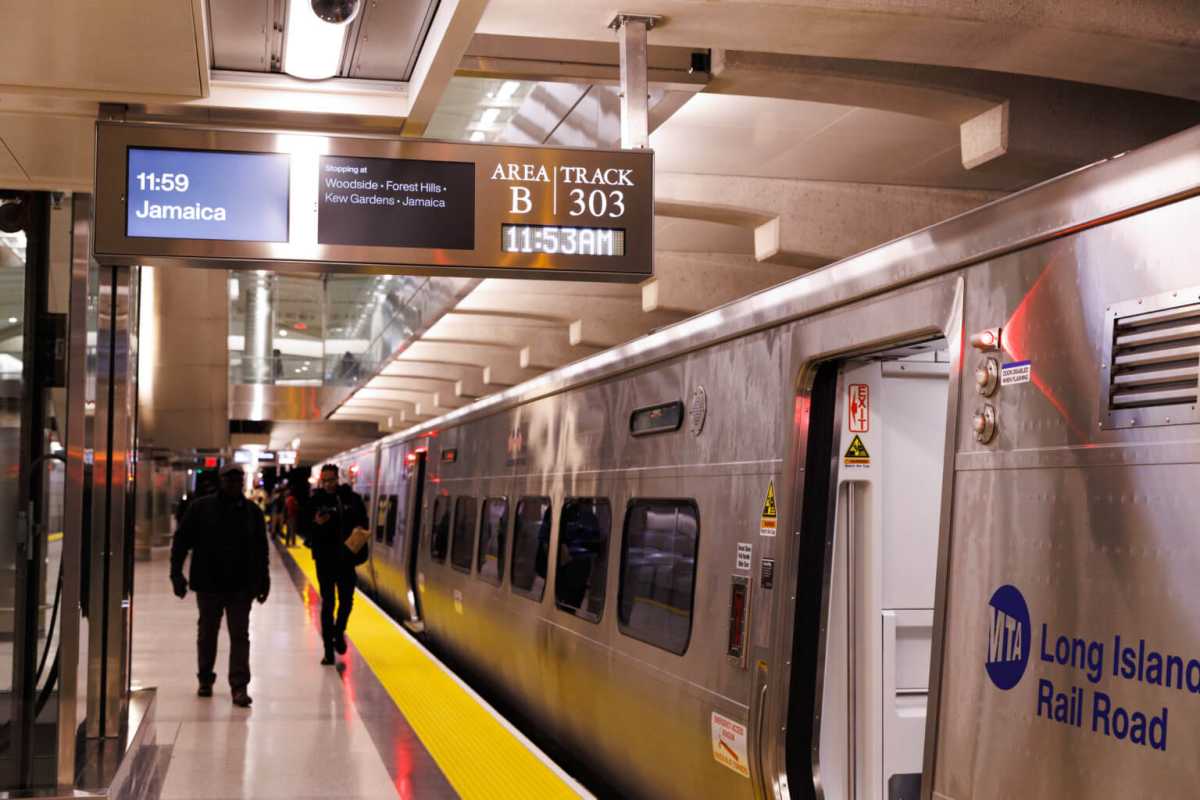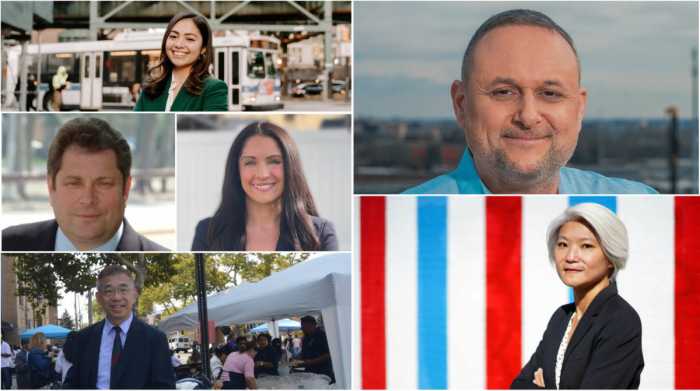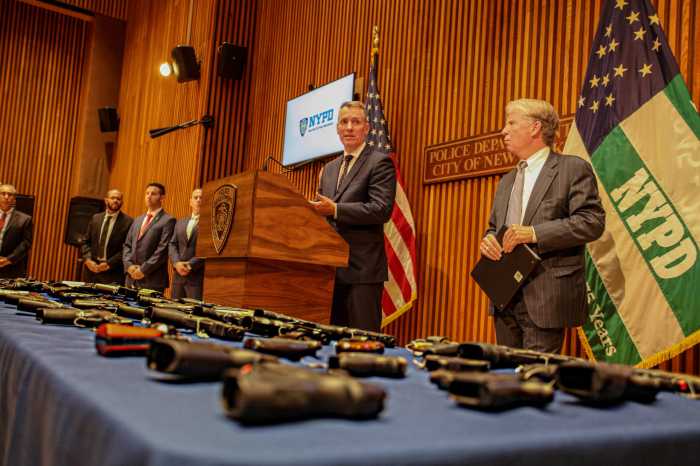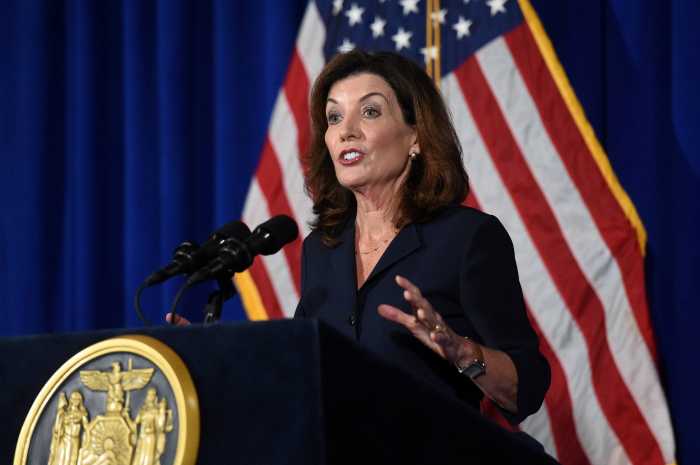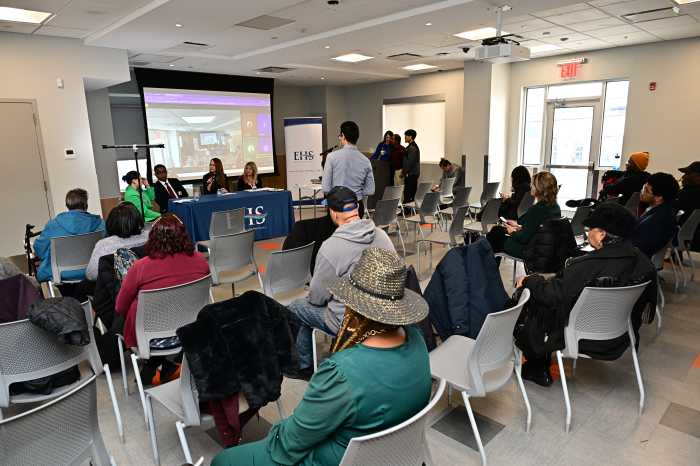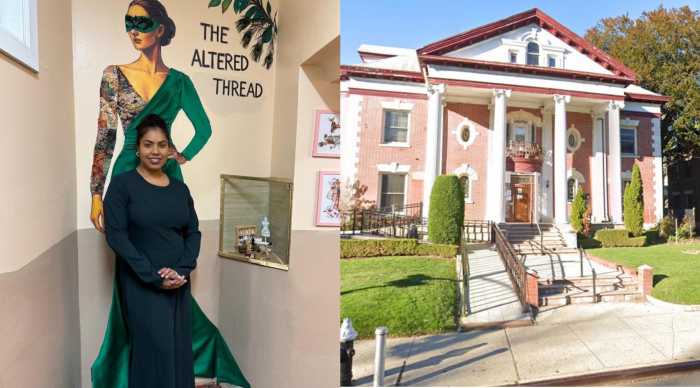A group of suburban lawmakers are urging their Albany colleagues to restrict proposed payroll tax increases, meant to shore up the finances of the Metropolitan Transportation Authority to businesses in the city — arguing the suburbs are already subject to “onerous” taxes without service levels equivalent to residents of the five boroughs.
Upstate Democratic Senators James Skoufis and Michelle Hinchey, Long Island Democratic Senator Monica Martinez, and upstate Republican Senator Rob Rolison sent a letter last week to Senate Majority Leader Andrea Stewart-Cousins, urging her to exempt the suburbs from Governor Kathy Hochul’s proposed payroll mobility tax increase on certain businesses in the MTA service area to rescue the fiscally-beleaguered transportation agency.
The lawmakers argue suburban commuters are already shouldered with “onerous” taxes without getting the levels of mass transit service seen in the city. They also contend that most of the money raised will go to subway and bus operations while the primary business beneficiaries of bolstered service will be located in the city, so the tax increase should not go beyond the limits of the five boroughs.
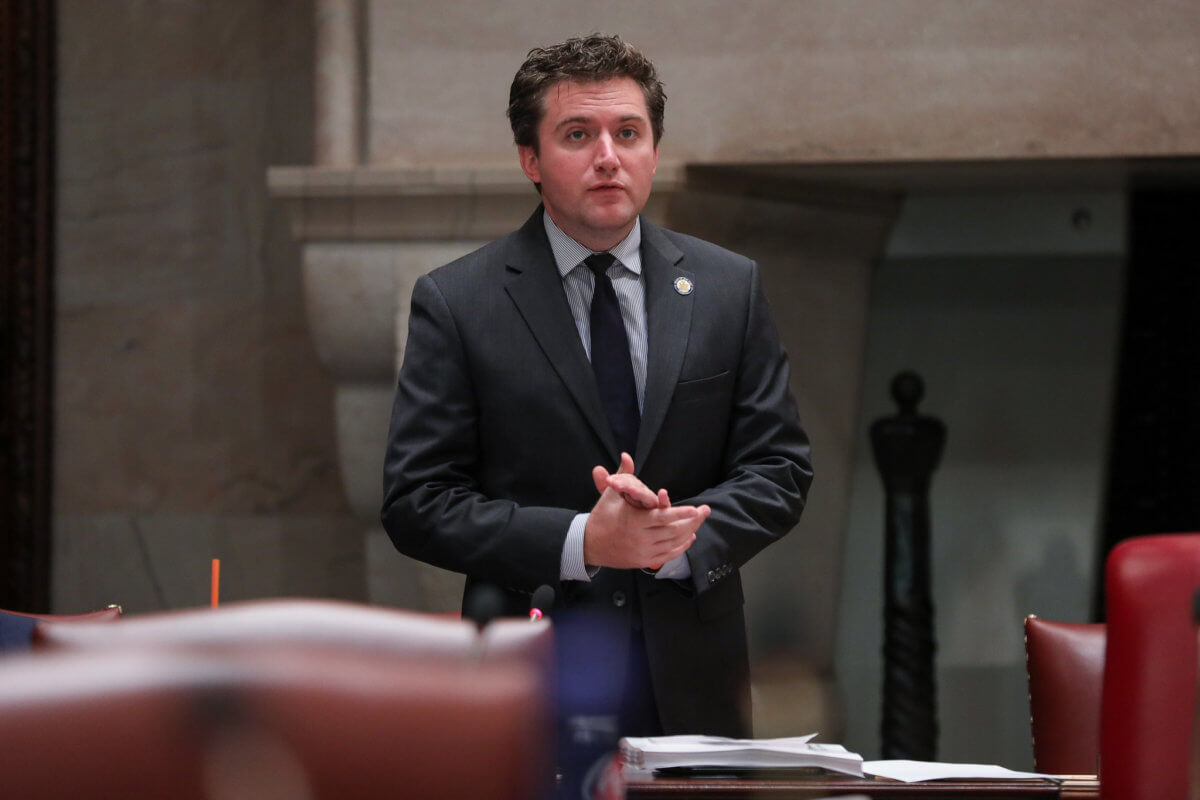
“Given the existing value gap outside the city (e.g. there are no subways and few MTA-operated buses) and the very fact that businesses in the city are the primary business beneficiaries of the system — riders take the MTA to get to work in New York City; riders generally do not take the MTA to get to work outside New York City — exempting non-New York City from the increase associated with this already-unjust tax is the appropriate response,” the quartet of legislators wrote in the Feb. 16 missive to Stewart-Cousins.
In her executive budget earlier this month, Hochul proposed raising the payroll mobility tax rate on businesses in the MTA service zone from 0.34% to 0.5%, the major component of her long-awaited plan to save the cash-strapped authority. The MTA has been slow to recover from the decimation of COVID-19, with work-from-home pinned for stagnating ridership subways, buses, and commuter rails as federal aid runs dry.
The MTA’s 2023 budget was balanced only after factoring in new cost-cutting and 5.5% fare hikes scheduled to take effect this year and in 2025; it still assumed a $600 million deficit that would grow to $1.6 billion by 2026 without new dedicated funding. Hochul’s plan also calls for future casino revenue to be directed to the MTA and for the city to contribute about $500 million more annually in subsidy.
In their letter, the suburban legislators suggest that municipalities outside the city should be exempted not only from the tax increase, but from the tax writ large, since it would post a levy on public funds used to run such municipalities. They also say community colleges and hospitals should be exempt from the payroll tax.
“Significant public funds flow to these groups and it is as anti-taxpayer as much as it is nonsensical to siphon some of those funds to an unrelated MTA tax. It is long past time that we address this inequity,” wrote the lawmakers. “The estimated fiscal impact to exempt community colleges, hospitals and non-New York City municipalities is a small fraction of the realized revenue. Thus, this plan injects hundreds of millions of new dollars into the MTA while protecting the overtaxed suburbs and correcting problems in the underlying, existing tax.”
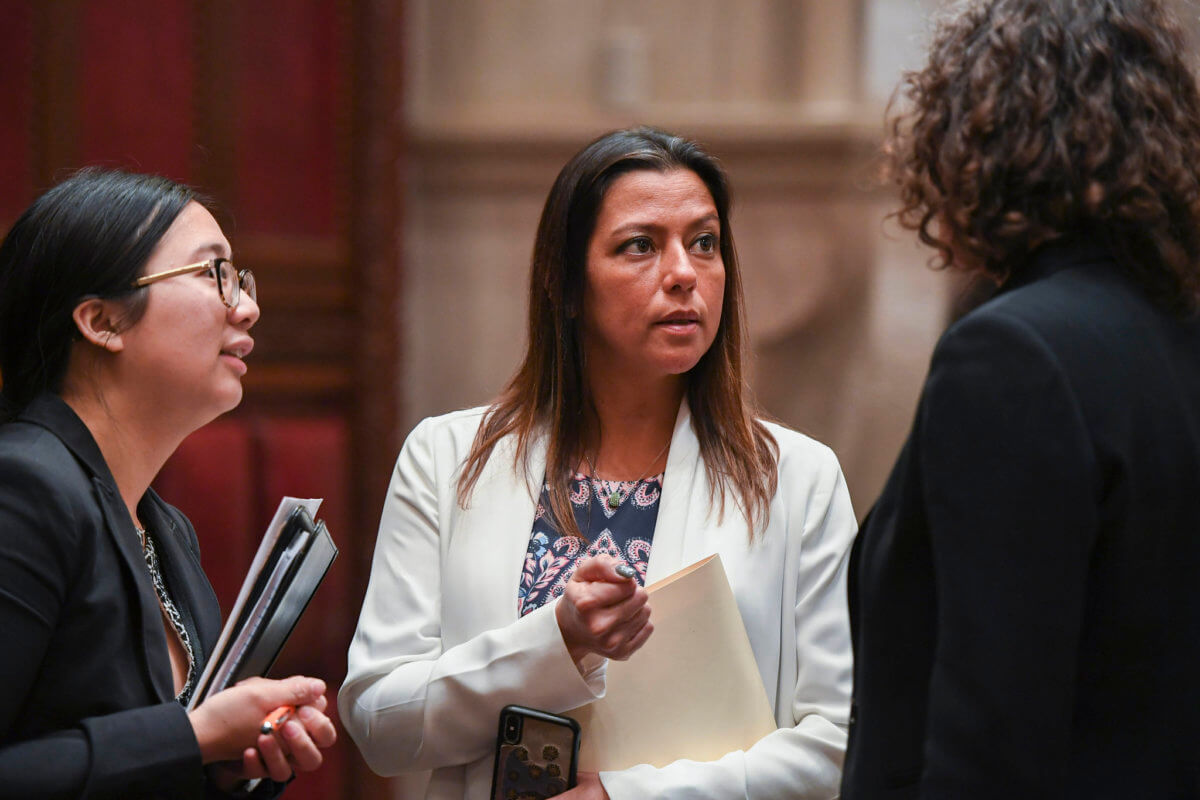
The payroll mobility tax was first enacted in 2009 and is levied on businesses in the five boroughs, the two counties on Long Island, and five upstate counties served by Metro-North. The tax has remained a thorn in the side of suburban legislators ever since.
Spokespersons for Stewart-Cousins and Hochul did not return requests for comment.
An MTA spokesperson directed amNewYork Metro to prior comments made by Chair and CEO Janno Lieber, wherein he posited only businesses with payrolls in excess of $2 million would be asked to contribute higher sums. The vast majority of such businesses are located in New York City, he noted.
“It would only apply to the biggest employers. Only 5% of all businesses would be subjected to this little incremental payroll mobility tax,” Lieber said on WCBS 880 radio on Feb. 15. “We’ve got on-time performance the best in 10 years on the subway. Metro-North and Long Island Rail Road historic high on-time performance 96 and 97%. Never seen numbers like that before. We need a little help from the businesses to make sure we can do that even though people are coming in less frequently.”
The MTA’s 2023-26 financial plan has 50% of revenue go to New York City Transit (including subways, buses, paratransit, and the Staten Island Railway) and 18% to the commuter rails (Long Island Rail Road and Metro-North). Of that revenue, 17% would go towards debt service, while the remainder of the $19.2 billion budget would go to the Bridges & Tunnels division and administrative overhead.
Suburban commuters have arguably been the primary beneficiaries of the MTA’s biggest megaprojects in recent years, including the introduction of LIRR service at Grand Central Terminal at the new Grand Central Madison station, and accompanying service expansion on that railroad. Another billion[s]-dollar megaproject is set to bring Metro-North into Penn Station in the coming years.
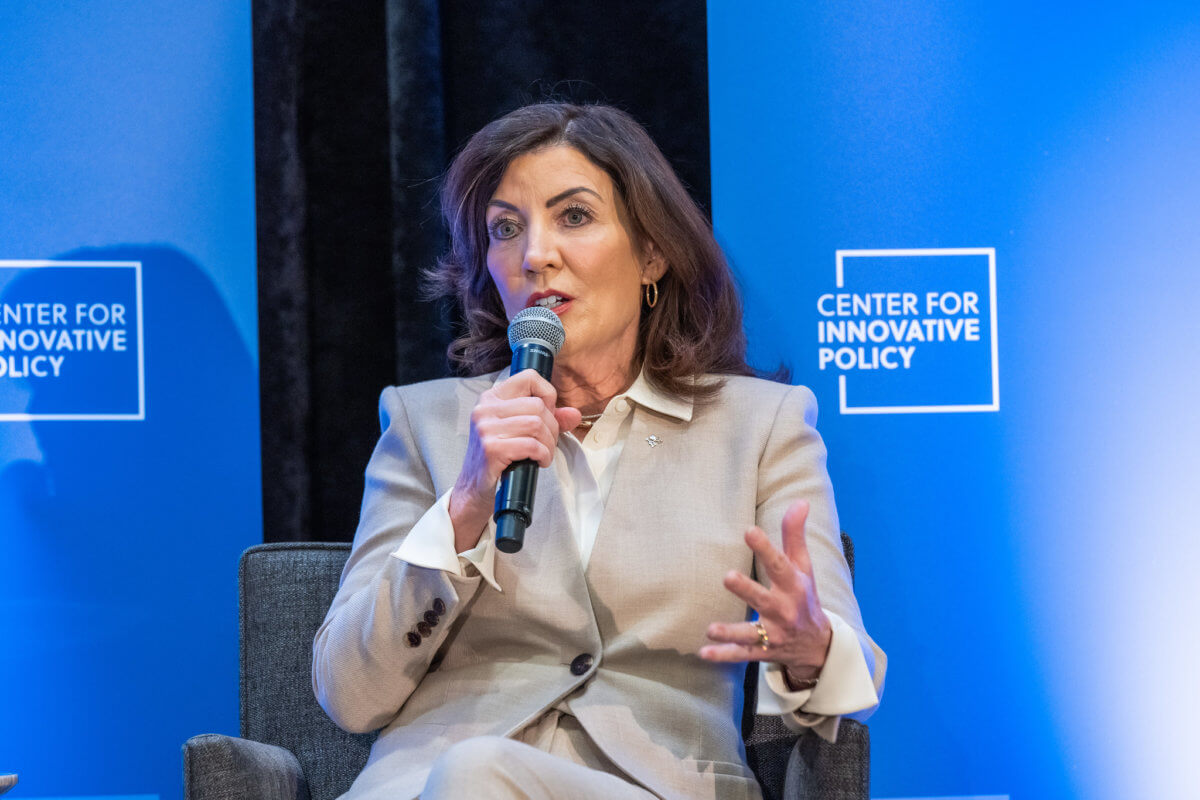
MTA brass have praised Hochul’s plan as one that would dig the authority out of a financial emergency, but suburbanites are not the only ones with gripes about the proposal. Mayor Eric Adams has decried the plan from the opposite end of the spectrum: he says the city, not the suburbs, are getting shafted, as the Big Apple is the state’s only municipality being asked to contribute new annual subsidies to the MTA, to the tune of over $500 million per year, in addition to the payroll tax increase and fare hike.
“New York City is the only locality that has been asked to increase its contribution — and by hundreds of millions of dollars per year,” Hizzoner told state lawmakers in Albany last week. “We all want what’s best for riders, but we need a fairer and more sustainable proposal. This current proposal hits New Yorkers twice — once through the higher fares that riders will still face and once through diminished service delivery by their local government, which will have at least half a billion dollars each year going to subsidize a state-run authority.”
A City Hall spokesperson referred amNewYork Metro back to the mayor’s Albany testimony when asked for further comment. The state itself would only contribute new subsidy once under Hochul’s plan, to the tune of $300 million this year.
Progressive lawmakers and rider advocates have also blasted the plan as not going far enough in improving service for riders. A rival proposal from that camp to “fix” the MTA would see the agency offer free city bus service and ensure train headways never exceed 6 minutes, paid for by remittance of the internet sales tax and value capture in real estate transactions. Responding to the lawmakers’ letter, the Riders Alliance, which is leading the 6-minute-service campaign, argued their plan would hobble a solution already seen as inadequate.
“Governor Hochul’s plan to keep buses and trains running is a foundation that legislative leaders must build upon through budget negotiations, not tear down,” said Riders Alliance spokesperson Danny Pearlstein. “Suburban riders already get more than their share of MTA subsidies; cutting suburban contributions to the MTA’s survival would be highly inequitable and shortsighted.”
